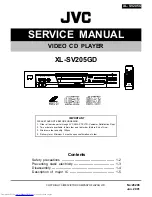
Perpendicular planer EN
13
12
downward and sideways pressure.
NOTE: The perpendicular planer cannot
correct work where the reference face is
twisted.
D. STRAIGHTENING AN EDGE
The Lower Datum Edge (18.6) of the
Perpendicular fence can be used to plane
a straight and perpendicular edge on an
inaccurate or irregular edged workpiece.
Mark the position of the desired straight edge
at each end of the workpiece.
Measure an offset of dimension below these
positions and mark again.
Clamp a straight edge (trusted wood batten
or steel section) to the work, its top surface
aligned with the offset marks.
Commence planing the edge, keeping material
removal reasonably even along the edge,
however this is not critical.
As the planed edge approaches the desired
position, reduce the planing set depth if
necessary for the best finish for the last few
passes before the Lower Datum Edge contacts
the straight edge.
NOTE: Tapers can also be produced by
adjusting the position of the straight
edge.
E. FINE TUNING THE PERPENDICULAR
FENCE
The Perpendicular fence is factory adjusted,
however the accuracy can be fine tuned by the
user.
Use a square to check the fence at each end.
Loosen the lock nut (18.1) and rotate the
turnbuckle to move the fence in the correct
direction.
Only small adjustments, typically less than 1
turn should be needed.
Re-check with the square and when satisfied
hold the turnbuckle whilst retightening the lock
nut.
There is no need to excessively tighten the
lock nut, just tight is sufficient.
Repeat for each end of the fence.
WORKING HINTS FOR YOUR
PLANER
WARNING: Danger of kickback!
Apply the machine to the work
piece only when switched on.
1. STANDARD SURFACE PLANING
Set the desired cutting depth. Position the
front part of the base plate flat onto the work
surface. Switch the machine on and push your
planer forward and it will start cutting, always
maintain all of the base plate flat on the work
surface to prevent the cutting blade jumping.
Move the plane evenly over the work surface.
for most applications 0-2mm max cutting
depth will produce a good surface finish. It is
best to use small depths of cut and repeat the
planning process.
2. EDGE CHAMFERING
Using the V-groove in the base plate (15) you
can make a chamfer on the work piece edge
(See fig. I). Guide the planer along the edge
and maintain a constant angle and force to
produce a good finish. You can control the
angle of the chamfer with your hands. Make a
test chamfer on a scrap piece of wood. Ensure
your work piece is clamped and supported
near the edge.
3. REBATING
fit the Rebate Depth Gauge (16) to your
planer. Set the required rebate depth using
the scale and the mark on the planer housing
next to the scale. Rebate width is set using
the Perpendicular fence (See fig. J).Loosen
locking knob (18.4) and adjust the required
rebating width (max 82mm). Tighten locking
knob (18.4) Adjust the desired rebating depth
with the rebating depth gauge (16) accordingly
(max 9mm) (See fig. K).Plane as often as
necessary to achieve the desired rebating
depth.
Summary of Contents for WX625
Page 3: ...4 17 9 16 15 14 21 11 13 5 1 2 3...
Page 4: ...2 1 5 5 6 19 8 450 20 m m 2 8 m m 9 7 10 12 13 A D G H I J K E F B C...
Page 5: ...18 6 18 7 M 18 8 N O P Q R 18 1 18 2 S 18 1 18 2 18 5 18 4 18 3 L...
Page 109: ...109 GR 109 1 ON OFF 2 3 4 5 6 D 7 F 8 F 9 10 F 11 12 H 13 H 14 15 V 16 17 18 19 F 20 J 21...
Page 111: ...111 GR 10o C 1 1 1 TCT 2...
Page 112: ...GR 112 1 2 3 4...
Page 115: ...115 GR B K C D 18 6 E 18 1 1 1...
Page 116: ...GR 116 0 2mm 2 V 15 3 16 J 18 4 82 mm 18 4 16 9mm K...
Page 118: ...118 RU 1 2 3 4 5 6 D 7 F 8 F 9 10 F 11 12 H 13 H 14 15 V 16 17 18 19 F 20 J 21...
Page 120: ...120 RU 10o C 1 1 1 TCT 2...
Page 121: ...121 RU 1 2 3 4...
Page 122: ...122 RU 1 2 1 2 A 2 0 0 mm 2 0mm 4 0 125mm B 3 5 C 4 6 D E 5 19 3 1 2 F 7 8 7 F 7 10 1 2 3 180o...
Page 124: ...124 RU B K C D 18 6 E 18 1 1...
Page 125: ...125 RU 1 0 2mm 2 V 15 I 3 16 J 18 4 82 18 4 16 9 K...
Page 127: ......
Page 128: ...Copyright 2013 Positec All Rights Reserved 2PPL02SPK11001A2...













































